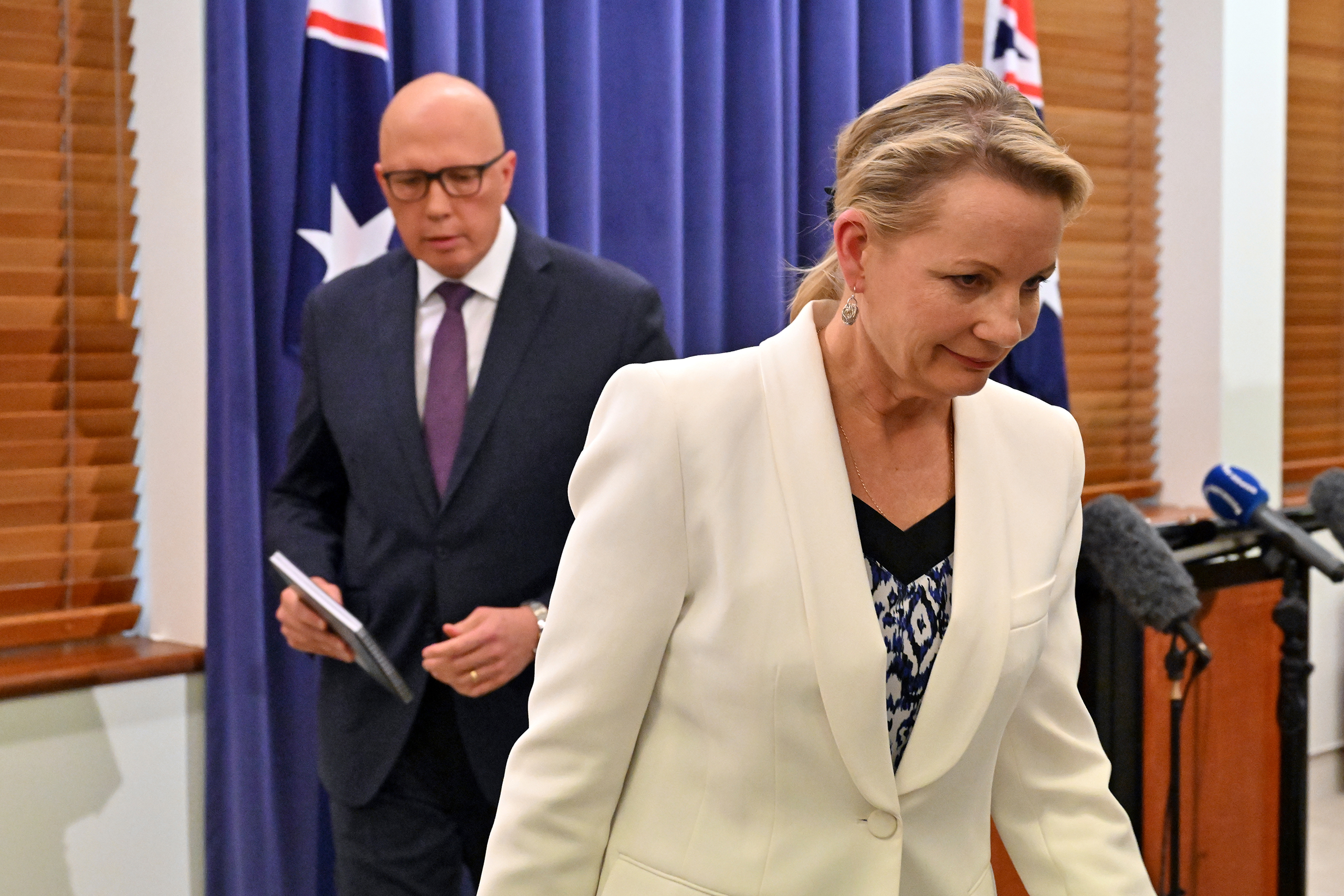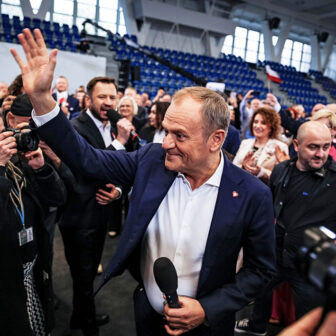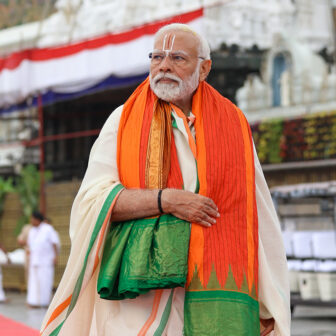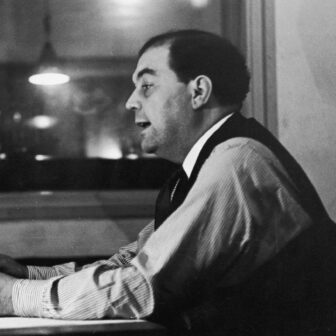There was a time when the leadership of the Liberal opposition swung like a pendulum. Back and forth, left to right, right to left. In the 1980s, against the Hawke government, we had Andrew Peacock (moderate), John Howard (conservative) and Peacock again. Each change was seen as the solution to bad polling: this is what the voters want.
Then, in the 1990s, came John Hewson, seen as right-wing in those days because of his very dry economic prescriptions. (Peter Costello was in that camp as well. By that point, the social conservatism that later became a fad under the Howard government was seen as a lost cause and the politics of anti-immigration a no-go area, thanks to Howard’s ill-fated 1988 attempt to tap into anti-Asian sentiment.)
Hewson was followed by Alexander Downer, cast as moderate, in temperament at least, inoffensive at first, before the party-room recycled Mr Bland himself, Howard. Once considered a politician of substance, he disowned virtually everything he once stood for in the cause of electability. It won him the 1996 election, and the “small target” label was born.
Fast forward over the millennium to Kevin Rudd’s time as PM, when the Liberals churned through Brendan Nelson (right-wing) and Malcolm Turnbull (left) before electing Tony Abbott (right). Then, in office, they went back to Turnbull.
And, finally, Scott Morrison. Previously a darling of the right thanks to his tough talk and action against asylum seekers, his decision to support Turnbull against Abbott blotted his copybook. But always a wily party-room operator, he successfully reinvented himself as the compromise replacement when Turnbull’s position was irretrievable. Sky after Dark and 2GB’s Ray Hadley were livid — they had demanded Dutton! — but quickly grew to love ScoMo.
That 2018 spill illustrates the left–right dynamic. In polling, Morrison and Dutton both registered single digits, and if it was up to the voters Turnbull’s replacement would have been his popular deputy Julie Bishop. But she was very much of Turnbull’s ideological ilk, and it was time for a conservative. (There’s a bit more to Liberal factions than that, of course; see this from the late Morrison era by James Massola in Nine papers.)
And so today, for almost two years now, the helmsman has been Peter Dutton. Very much of the right, like his predecessor he rose to the top via the immigration portfolio with the backing of News Corp.
Some insist Dutton is wily, not to be underestimated — that still waters run deep. Others suggest that what you see is what you get — that there’s really not much thinking going on. Let’s settle for in between: as leader he’s shown greater discipline than in government, with no frolics into the supposed plight of white South African farmers or Melburnians’ terror of leaving their homes lest they are set upon by African (again) gangs. He’s been choosing his words more carefully when he rails against asylum seekers, although he seems to cling to this political strand. The polls, meanwhile, have narrowed to a Labor two-party lead of around 51 per cent.
Dutton’s certainly not the leader you’d put in to win back teal voters. That’s okay, because he claims he doesn’t really want to; his trail to the Lodge will go through the outer suburbs and regions. But assuming today’s crossbench members are all re-elected, and assuming they don’t support him in a hung parliament, he’ll need a very big two-party-preferred national vote, more than 53 per cent, to do it.
But maybe he does assume either teal support or that his party will regain that territory anyway. Teal successes were predominately a reaction to Morrison personally, and it’s just possible they won’t outlast him. Dutton’s addiction to asylum-seeker/refugee politics is counterproductive on this front, though, and it’s never been the effective electoral tool its proponents are convinced it is.
It’s possible I may have written on these pages (okay, I did) that Dutts was unlikely to still be leader at the 2025 election. Recent history (see the 2008–09 turnstile, above) seemed a persuasive indicator, and it made cyclical sense.
Dutton’s demise would have seen the baton go to a moderate, and the obvious candidate would have been his deputy, Sussan Ley. Female, photogenic, centrist, just the sort of person who might win back teal seats or, failing that, successfully negotiate with teals themselves in a hung parliament.
Yet here we still are.
Perhaps, as with many rules of Australian politics, the see-saw no longer applies. For one thing, thanks to the 2022 election, there are very few “moderates” in the partyroom. With the exception of Curtin (Western Australia), each of the six teal victories came at the expense of a Liberal moderate, most of them well-credentialled future leadership material. A moderate woman also lost blue-ribbon Higgins to Labor, and the Greens took Brisbane from a moderate man. (Brisbane, unlike the others, was not traditional Liberal territory.)
There are still a few in the Senate, but overall it’s a tiny rump with little power.
Ley has also been middling to terrible as deputy. She was put there to take the rough edge off the leader, but it hasn’t worked out that way. In a sense she has been too loyal, reciting his scripts but without the carefully constructed deniability. Rather than presenting as the grown-up who cleans up the mess, explaining that “what Peter meant was such and such,” she goes further than him. That Twitter debacle days before the Dunkley by-election is the most memorable example. Her many unforced errors include her response to the government’s rejigged Stage 3 tax cuts.
So what I had anticipated — the emerging chit-chat from constituents to Liberal MPs, media reports of Ley’s charm with punters, a fresh wave of polling about who should be leading the party — has not come to be.
Are there any other contenders? Simon Birmingham is in the wrong chamber. Paul Fletcher might have bouts of fancying himself before yielding to reason.
Bridget Archer is the choice of left-leaning members of the political class, and it’s just conceivable that colleagues might overcome their resentment of her repeated disloyalty and elect her if it meant taking government. But she’s actually little-known in the electorate beyond Tasmania.
If you were Anthony Albanese, who would you prefer to face? If Ley did become leader, the inevitable honeymoon and poll boost would induce some terror in government ranks for a while. But the figures would eventually come closer to earth, assisted by likely misjudgements. (The Downer experience 1994–95 comes to mind.) Unless she was installed on election eve.
So are the Liberals stuck with Dutton as leader until the next election?
It looks like it, doesn’t it? •





